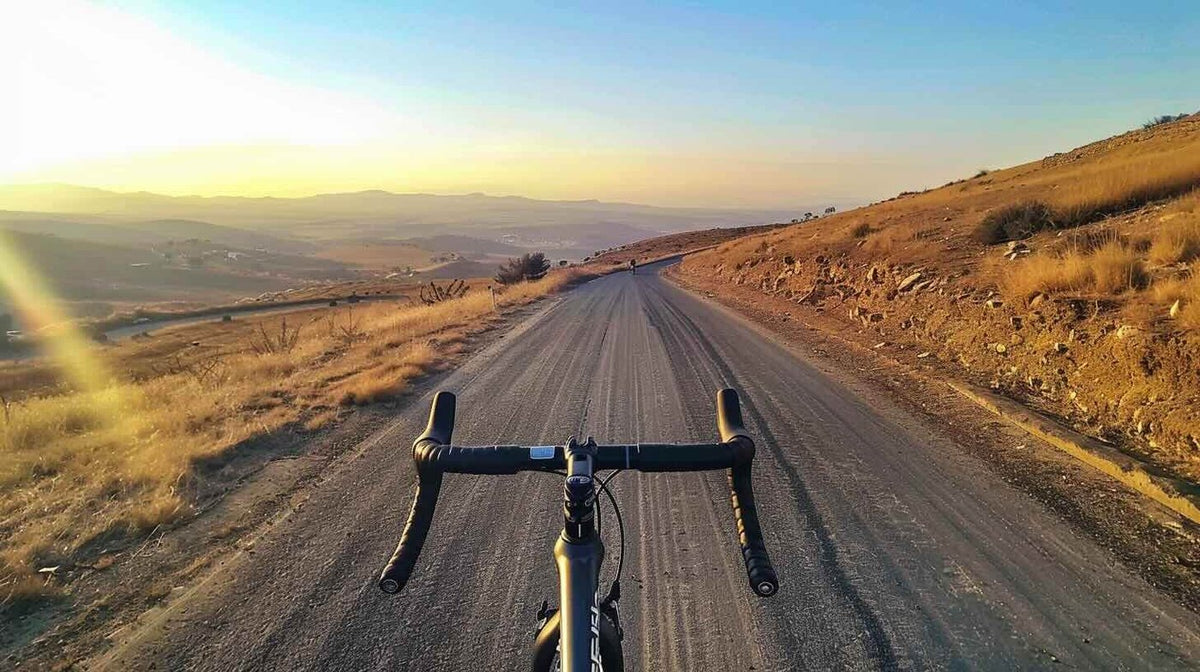
Road Bike PSI vs Mountain Bike PSI: What Every Rider Should Know
|
|
Time to read 3 min
|
|
Time to read 3 min
Whether you're racing on smooth pavement or tackling rocky trails, knowing the correct road bike PSI vs mountain bike PSI is essential to maximize your ride performance and safety. Proper inflation boosts performance, enhances comfort, and ensures safety across both road and mountain biking adventures.
Table of contents
Road bike tires are typically narrow, requiring higher pressure to minimize rolling resistance and maximize speed.
Standard Range: 80–120 PSI
Heavier riders: Inflate closer to 110–120 PSI
Lighter riders: 80–95 PSI for better comfort
Adjustments:
Reduce by 5–10 PSI in wet conditions to improve grip.
Check before every ride, as road tires naturally lose pressure over time.
Overinflating road tires can cause a harsher ride and increase puncture risks, while underinflating can lead to pinch flats.
Mountain bike tires are wider and designed for lower pressures to maintain traction on varied terrain.
Standard Range: 25–40 PSI for typical trail riding
Technical trails (rocks, mud): 22–28 PSI for enhanced grip
Hardpack or speed-focused trails: 30–35 PSI to avoid tire squirm
Factors like tire width, rider weight, and terrain type should influence your PSI decisions. Always check tire sidewalls for manufacturer recommendations. If you need guidance on replacing tires, explore our guide on how to change a bicycle tire .
Overinflation: Reduces traction and comfort.
Underinflation: Increases rolling resistance and pinch flat risk.
Ignoring weather changes: Cold temperatures lower PSI; hot weather can raise it.
Mixing tire types: Ensure rim and tire width compatibility.
Remember: it's better to check and adjust often than to ride with improper pressure. If a puncture occurs, see our detailed advice on how to patch a bicycle tire .
Use a quality digital gauge for accurate readings.
Check PSI when tires are cold (before riding).
Inspect tire wear regularly; cracks or bulges are signs to replace the tire.
Adjust PSI seasonally: Slightly higher in cold months to maintain grip.
Maintaining consistent, optimal PSI keeps you safer, more efficient, and ready for any adventure. For advanced inflation solutions, check out the Woowind Electric Air Pumps collection .
Explore the full Woowind Bike Air Pump Collection for more inflator options suited for every cycling style.
The Woowind BP188 portable air pump is an ideal companion for both road and mountain bikers. Compact yet powerful, it features:
Precise PSI control to prevent overinflation
Fast inflation for road tires, MTB, and more
Lightweight and rechargeable design for easy transport
Multiple nozzles included for universal compatibility
For a reliable, easy-to-use solution that adapts to all your riding needs, Woowind BP188 helps you hit the road or trail with confidence.
Explore the full Woowind Bike Air Pump Collection for more inflator options suited for every cycling style.
The Woowind BP188 portable air pump is an ideal companion for both road and mountain bikers. Compact yet powerful, it features:
Precise PSI control to prevent overinflation
Fast inflation for road tires, MTB, and more
Lightweight and rechargeable design for easy transport
Multiple nozzles included for universal compatibility
For a reliable, easy-to-use solution that adapts to all your riding needs, Woowind BP188 helps you hit the road or trail with confidence.
Typically between 80–120 PSI, depending on rider weight and road conditions.
Generally 25–40 PSI, but it should be adjusted based on terrain type and rider weight.
Ideally before every ride, especially for road bikes where pressure loss is more common.
Yes, with the right nozzle. A pump like the Woowind BP188 is designed to fit both types.
Cold temperatures decrease PSI, while heat increases it—adjust accordingly before rides.
Stay prepared, ride smart, and make every journey a smooth one with regular pressure checks and reliable gear like the Woowind BP188.